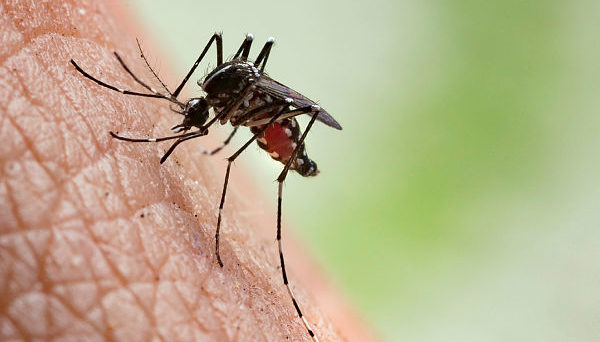
Changes in ecology, pathogen adaptation, and human behavior including travel and transcontinental commerce, are factors leading to the emergence of old, unrecognized, and new infectious diseases.
Rift Valley fever (RVF) is a zoonotic disease, meaning that it can be transmitted to humans from animals, but the RVF virus can also be transmitted by mosquito bites.In recent decades, formerly neglected tropical infectious agents have been “rediscovered” following their introduction and spread into naïve populations. Many insect-borne diseases have re-emerged with devastating consequences causing human illness, deaths and socioeconomic disruption.
Rift Valley fever (RVF) is a zoonotic disease, meaning that it can be transmitted to humans from animals, but the RVF virus can also be transmitted by mosquito bites.
I remember a dear colleague of mine, Dr Bernard-Alex Gaüzère. He was working in Reunion Island where the chikungunya virus spread for the first time in 2004-2006. He said it was “the chik, the shock, the cheque”; the virus introduction was unpredictable and led to a major psychological and socioeconomic burden.
A disease endemic to sub-Saharan Africa, it was first identified in livestock in Kenya’s Rift Valley in the 1930s and in 2000, the first human cases outside Africa were detected, on the Arabian Peninsula. Since 2010, African outbreaks have been reported each year by the World Health Organizations with associated human deaths and significant economic losses.
Soldiers deployed in endemic areas are at risk of exposure to the virus. By investigating unexplained fevers among military personals overseas, we documented RVF infections in Mali in 2017 and in Mayotte in 2019 revealing the challenge RVF can be.
Rift Valley Fever, a potential hidden enemy
The RVF virus usually affects both wild and domesticated animals (especially domesticated cattle, buffalo, sheep, goats, and camels) during heavy rainfall. Outbreaks of RVF are usually sporadic. However, the virus can be exported through infected animals or humans, in many areas that have suitable conditions for local transmission, including temperate regions.
Once circulating, the RVF virus can be transmitted to humans by several pathways. This complex biological cycle makes strategies of control difficult. Routes of transmission include direct contact with tissues of infected animals, consumption of contaminated animal products, breathing in droplets containing the virus, and bites of hematophagous insects that have the virus on their mouthparts. Many competent vectors have been identified including Aedes and Culex mosquitos, which are globally distributed.
Rift Valley fever human cases are often detected when the virus has already spread among livestock and people, hence outbreak control is challenging. There are no commercially licensed vaccines nor antiviral treatment for humans.
Moreover, most RVF epidemics occur during seasons favorable to other mosquito-borne diseases such as dengue, Zika, malaria, or zoonoses as for example leptospirosis. All these co-circulating pathogens can have similar symptoms (figure), and the accurate diagnosis is difficult. However, identification of the infectious agent may be crucial to correctly manage patients, to adapt preventive measures and plan for follow-up.
Re-description of human Rift Valley Fever and guidelines are needed
Rift Valley Fever requires particular attention, but is currently lacking clinical data. In humans, RVF virus causes a variety of presentations that range from mild to life threatening symptoms, which can involve various organs at different time. Fatal outcomes may result from hepatic, hemorrhagic or neurologic complications. Severe complications may occur several weeks after the acute infection such as blinding retinitis and sub-acute encephalitis. This broad clinical spectrum over a long period of time makes difficult to establish standardized definitions of RVF cases and recommendations to monitor patients.

We conducted a literature review on the RVF disease in humans to gather all of what is known to-date and explore the frontiers of knowledge. This work led us to propose an algorithm to assist physicians on the field. This algorithm could be evaluated in Sudan during the ongoing outbreak and could help neighboring places in the detection of first cases. We make the case for re-describing the RVF human disease and improving detection of cases.
Comments